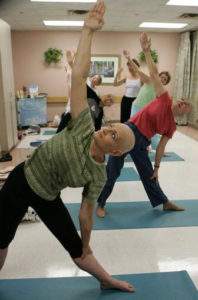
By John M. de Castro, Ph.D.
“Mindfulness is, above all, about being aware and awake rather than operating unconsciously. When you’re consciously present at work, you’re aware of two aspects of your moment-to-moment experience—what’s going on around you and what’s going on within you.” – Shamash Alidina
A healthcare system is only as good as the propensity of people to utilize it. For a number of reasons including procrastination, denial, fear, etc. people often do not go to the doctor even when needed. This can have negative health consequences. On the other hand, using the health care system in a timely manner promotes health by preventing disease or increasing early diagnosis which can reduce the duration and severity of disease. So, counterintuitively, using the healthcare system can actually reduce costs. Hence finding methods to promote the timely and appropriate use of the healthcare system is in everyone’s interest.
In the U.S., the majority of health insurance is provided by employers who are responsible for the costs. So, it is in the best interest of employers to promote the health of their employees to reduce costs and improve their bottom line. This is a win-win situation where health promotion in the workplace is good both for the employer and the employee. There have been a number of programs implemented in the workplace that have been tried to improve employee health. A common program is one that promotes a healthy diet and exercise. Less common, but growing in popularity are programs that employ mindfulness training. But, to date there has not been a direct comparison of the two.
In today’s Research News article “A healthcare utilization cost comparison between employees receiving a worksite mindfulness or a diet/exercise lifestyle intervention to matched controls 5 years post intervention.” See:
or see summary: Klatt and colleagues recruited faculty and staff who participated in the university’s health care plan which also tracked costs. They were randomly assigned to receive either a diet and exercise education program or a mindfulness training program, or to a no-treatment matched control group. They measured health care costs for the nine months prior to the trainings and for five years after. The mindfulness training was a group based training in mindfulness meditation while the diet and exercise education program worked to improve awareness of health behaviors.
They found that both training groups, in comparison to controls, had increased use of the healthcare system as evidenced by an increase in prescription medications but a decreased use of primary care, fewer hospital admissions, and overall lower healthcare costs. The overall savings averaged $4,000 per employee per year. Hence, both mindfulness and diet and exercise training programs resulted in substantially lower healthcare costs that were maintained over a 5-year period. To have such a long-term follow-up is extremely rare but very valuable as it demonstrates that the training programs have enduring consequences.
The authors “hypothesize that the results of this study reflect that both of the original interventions raised health awareness, so that participants were more proactive and involved in their health.” It is likely that they did so in different ways. Diet and exercise education did so directly by stressing engaging in health behaviors while mindfulness training did so by raising the individual’s awareness of their body and physical state. If this is true it suggests that combining the two interventions may have an even greater impact on health and healthcare costs.
So, improve health and lower costs with workplace mindfulness.
“Once you learn mindfulness skills, you can practice them at almost any moment of the day—sitting at your computer, stuck in traffic, even eating. In fact, there has been a . . . growing interest in using the practice of mindfulness in the workplace to provide a buffer against stress.” – Jason Marsh
CMCS – Center for Mindfulness and Contemplative Studies
This and other Contemplative Studies posts are also available on Google+ https://plus.google.com/106784388191201299496/posts
Study Summary
Klatt MD, Sieck C, Gascon G, Malarkey W, Huerta T. A healthcare utilization cost comparison between employees receiving a worksite mindfulness or a diet/exercise lifestyle intervention to matched controls 5 years post intervention. Complement Ther Med. 2016 Aug;27:139-44. doi: 10.1016/j.ctim.2016.05.008.
Abstract
Objective: To compare healthcare costs and utilization among participants in a study of two active lifestyle interventions implemented in the workplace and designed to foster awareness of and attention to health with a propensity score matched control group.
Design and setting: We retrospectively compared changes in healthcare (HC) utilization among participants in the mindfulness intervention (n = 84) and the diet/exercise intervention (n = 86) to a retrospectively matched control group (n = 258) drawn for this study. The control group was matched from the non-participant population on age, gender, relative risk score, and HC expenditures in the 9 month preceding the study.
Main outcome measures: Measures included number of primary care visits, number and cost of pharmacy prescriptions, number of hospital admissions, and overall healthcare costs tracked for 5 years after the intervention.
Results: Significantly fewer primary care visits (p < .001) for both intervention groups as compared to controls, with a non-significant trend towards lower overall HC utilization (4,300.00 actual dollar differences) and hospital admissions for the intervention groups after five years. Pharmacy costs and number of prescriptions were significantly higher for the two intervention groups compared to controls over the five years (p < 0.05), yet still resulted in less HC utilization costs, potentially indicating greater self-management of care.
Conclusion: This study provides valuable information as to the cost savings and value of providing workplace lifestyle interventions that focus on awareness of one’s body and health. Health economic studies validate the scale of personal and organization health cost savings that such programs can generate.








